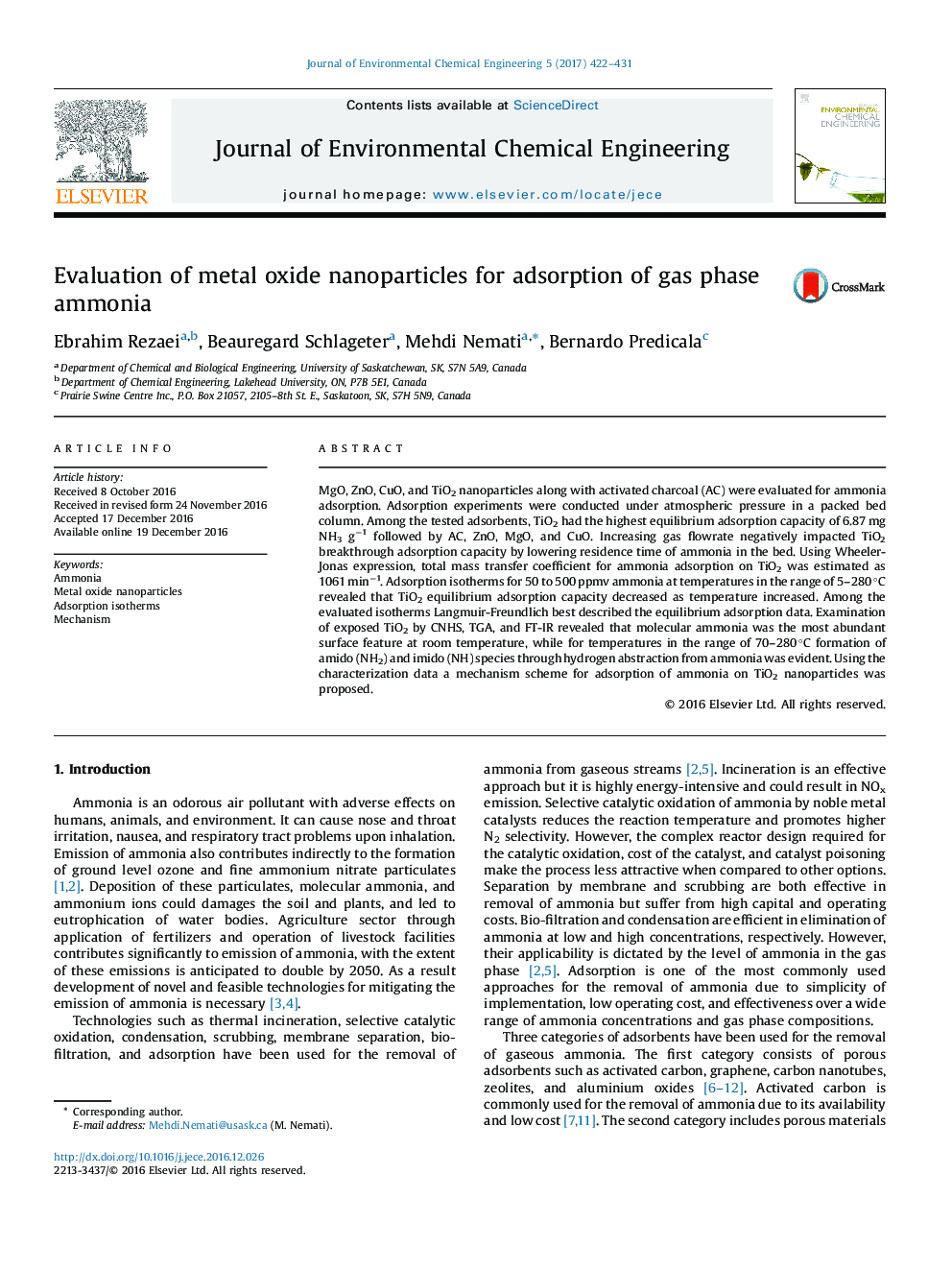| Article ID | Journal | Published Year | Pages | File Type |
|---|---|---|---|---|
| 6477377 | Journal of Environmental Chemical Engineering | 2017 | 10 Pages |
MgO, ZnO, CuO, and TiO2 nanoparticles along with activated charcoal (AC) were evaluated for ammonia adsorption. Adsorption experiments were conducted under atmospheric pressure in a packed bed column. Among the tested adsorbents, TiO2 had the highest equilibrium adsorption capacity of 6.87 mg NH3 gâ1 followed by AC, ZnO, MgO, and CuO. Increasing gas flowrate negatively impacted TiO2 breakthrough adsorption capacity by lowering residence time of ammonia in the bed. Using Wheeler-Jonas expression, total mass transfer coefficient for ammonia adsorption on TiO2 was estimated as 1061 minâ1. Adsorption isotherms for 50 to 500 ppmv ammonia at temperatures in the range of 5-280 °C revealed that TiO2 equilibrium adsorption capacity decreased as temperature increased. Among the evaluated isotherms Langmuir-Freundlich best described the equilibrium adsorption data. Examination of exposed TiO2 by CNHS, TGA, and FT-IR revealed that molecular ammonia was the most abundant surface feature at room temperature, while for temperatures in the range of 70-280 °C formation of amido (NH2) and imido (NH) species through hydrogen abstraction from ammonia was evident. Using the characterization data a mechanism scheme for adsorption of ammonia on TiO2 nanoparticles was proposed.
